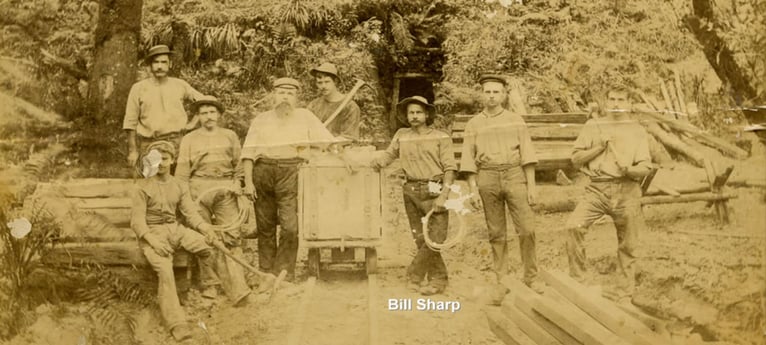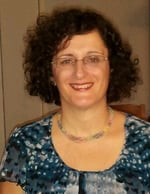We're very pleased to introduce you to another talented member of our team - Brenda Sharp, Senior Geophysicist at Ronacher McKenzie Geoscience. Brenda shares with us a little background on her early career influences, and some experiences working in Australia and Canada, in this meet the team post.
"Born in New Zealand, to a family history of mining and quarrying (see my great, great grandfather Bill in the picture below) and a father crazy about rockhounding (holidays were spent wading through streams looking for elusive gemstones), it seemed like a natural fit to move into geology. However, I also enjoyed mathematics and physics, and one day at school, came across a careers board that mentioned combining a love of geology with maths and physics into a path known as geophysics.

After a brief stint in Taupo, New Zealand, working with a mining company, I moved to Australia to join Geoterrex Pty Ltd, as part of the airborne data processing team – focusing mainly on magnetics and TDEM.
When I started (now I am showing my age), you couldn’t “see” the data as you can now, you had to identify abnormalities in the data from looking at the numbers. The only time you really got to see the results of the processing, was by creating contour maps (completed by pen printers, it took a lot of time, and hopefully the pens didn’t run out of ink!).
At that time, there were only 20 channels of EM – X coil dB/dt. Now, there are so many additional components - Y, Z and both dB/dt and B-field (for TDEM, Time-domain electromagnetics). I always forget that although there are many tools to view the data now, the amount of data collected is so significantly greater, that to a person just starting out in EM data processing today, it must seem overwhelming. I got to start out with baby steps by comparison…
I moved to Canada in 1995, and continued to work with Geoterrex, and later Fugro, and still later again CGG. During this time, as part of the processing department (which included field work), I had the opportunity to work in North and South America, India and Africa. During this time, I identified an anomaly which, on follow-up by the client, led to the discovery of the Perseverance zinc-copper-silver deposit in Quebec.
In 2006, I transitioned into the interpretation department. I was always trying to find out what the data meant geologically, and wanted to bring small, weak, anomalous features to the client’s attention, so it seemed like a natural fit.
I always believed (and still do) in giving the client the best possible products – I am passionate about it.
I always try to review the raw data (if available) when creating processing products or conducting an interpretation. This helps me to validate or negate a feature of interest, and to extract as much information as possible from whatever dataset I am looking at, while taking into account variables that may produce false features."
 Brenda is a member of the Association of Professional Geoscientists of Ontario (APGO), the Canadian Exploration Geophysical Society (KEGS) and the Prospectors & Developers Association of Canada.
Brenda is a member of the Association of Professional Geoscientists of Ontario (APGO), the Canadian Exploration Geophysical Society (KEGS) and the Prospectors & Developers Association of Canada.
As a valued memeber of our team, we're very pleased to have her expertise and experience contributing to our geophysical work. Brenda's commitment to quality is inspiring and brings real value to our client's projects!




